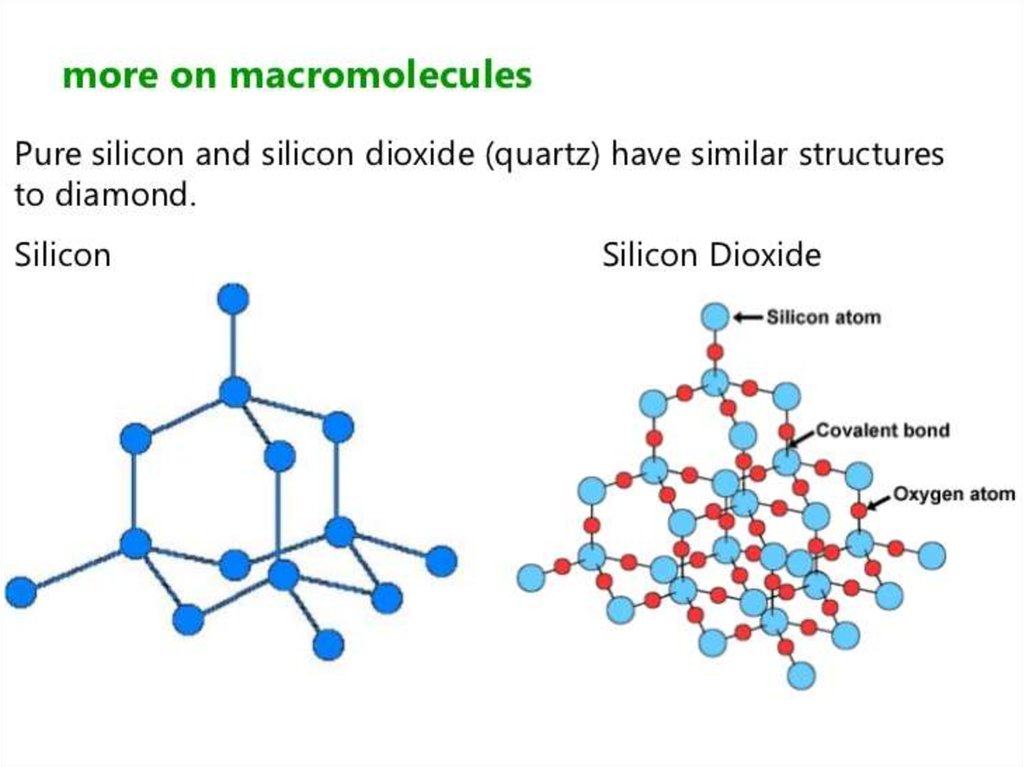
Compounds with an Si=O double bond called silanones are extremely unstable. Polymers with repeating siloxane linkages are called silicones. Silanols tend to dehydrate to give siloxanes: Siloxides are the deprotonated derivatives of silanols: R They are about 500x more acidic than the corresponding alcohols. Many silanols have been isolated including (CHģSiOH. Less frequently silanols are prepared by oxidation of silyl hydrides, a reaction that uses a metal catalyst: They are generally prepared by hydrolysis of silyl chlorides: R The overarching exception is the rarity of multiple bonds to silicon, as reflected in the double bond rule. Most of these are analogous to organic compounds. Silicon is a component of many functional groups. Similarly, tris(trimethylsilyl)silyl lithium is derived from tetrakis(trimethylsilyl)silane: ((CH 3) 3Si) 4Si + CH 3Li → ((CH 3) 3Si) 3SiLi + (CH 3) 4Si Functional groups Hexamethyldisilane reacts with methyl lithium to give trimethylsilyl lithium: (CH 3) 6Si 2 + CH 3Li → (CH 3) 3SiLi + (CH 3) 4Si In the related silylmetalation, a metal replaces the hydrogen atom. Hydrosilylation requires metal catalysts, especially those based on platinum group metals. Idealized mechanism for metal-catalysed hydrosilylation of an alkene The method can also be used for phenyl chlorosilanes. About 1 million tons of organosilicon compounds are prepared annually by this route. The main and most sought-after product is dimethyldichlorosilane:Ī variety of other products are obtained, including trimethylsilyl chloride and methyltrichlorosilane. These chlorides are produced by the " Direct process", which entails the reaction of methyl chloride with a silicon-copper alloy. The bulk of organosilicon compounds derive from organosilicon chlorides (CH The first organosilicon compound, tetraethylsilane, was prepared by Charles Friedel and James Crafts in 1863 by reaction of tetrachlorosilane with diethylzinc. Properties Relevant to OrganoSi ChemistryĮlectronegativities Relevant to OrganoSi Chemistry Another manifestation is the β-silicon effect describes the stabilizing effect of a β-silicon atom on a carbocation with many implications for reactivity. The strength of the Si-O bond is strikingly high, and this feature is exploited in many reactions such as the Sakurai reaction, the Brook rearrangement, the Fleming–Tamao oxidation, and the Peterson olefination.

The C–Si bond is somewhat polarised towards carbon due to carbon's greater electronegativity (C 2.55 vs Si 1.90). Compared to carbon–carbon bonds, carbon–silicon bonds are longer and weaker. In the great majority of organosilicon compounds, Si is tetravalent with tetrahedral molecular geometry. Several organosilicon compounds have been investigated as pharmaceuticals. Silafluofen is an organosilicon compound that functions as a pyrethroid insecticide. Silicates, on the other hand, have known existence in diatoms. Biology and medicine Ĭarbon–silicon bonds are absent in biology, however enzymes have been used to artificially create carbon-silicon bonds in living microbes.

Silicone caulk, commercial sealants, are mainly composed of organosilicon compounds mixed with hardener. Other important uses include agricultural and plant control adjuvants commonly used in conjunction with herbicides and fungicides. Most common are antifoamers, caulks (sealant), adhesives, and coatings made from silicones. Organosilicon compounds are widely encountered in commercial products. Rochow has also made a significant contribution into the organosilicon chemistry by first describing Müller-Rochow process. In his works Kipping was noted for using Grignard reagents to make alkylsilanes and arylsilanes and the preparation of silicone oligomers and polymers for the first time. In recognition of Kipping's achievements the Dow Chemical Company had established an award in 1960s that is given for significant contributions into the silicon chemistry. He also had coined the term "silicone" (resembling ketones, this is errorneous though) : 286 in relation to these materials in 1904. Extensive research in the field of organosilicon compounds was pioneerd in the beginning of 20th century by Frederic S. The same year they also described a «polysilicic acid ether» in the preparation of ethyl- and methyl-o-silicic acid. In 1863 Charles Friedel and James Crafts made the first organochlorosilane compound.


 0 kommentar(er)
0 kommentar(er)
